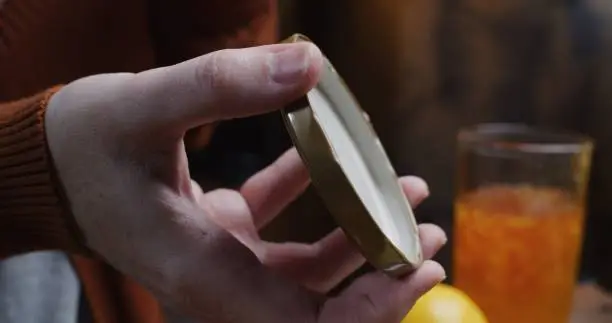Canning has long been a popular method for preserving food, whether it’s fruits, vegetables, jams, or sauces. A key component in the success of any canning process is the canning lid, which ensures an airtight seal that keeps bacteria and contaminants out, preserving the food’s freshness and flavor. Today, there are various types of canning lids https://forjars.co/, each designed with specific features to cater to different canning needs. This article explores the main types of canning lids available and weighs their pros and cons, helping you choose the right type for your preserving projects.
Tin, Screw-On, Glass, Vacuum, Reusable
Each type of canning lid has its distinct properties and functions. Here’s a breakdown of some of the most commonly used lids in home canning:
Tin Lids
Tin lids are one of the oldest and most commonly used types of canning lids. Traditionally made of tin-plated steel, they are used with a rubber ring to create an airtight seal. Tin lids are usually disposable, meaning they are intended for one-time use, as the sealing material may degrade over time.
Screw-On Lids
Screw-on lids are convenient and widely used, especially for home canning. These lids often come as a two-piece set consisting of a flat metal lid with a rubberized gasket and a screw-on metal ring that holds the lid in place during the canning process. When heated, the rubber gasket on the lid softens and forms a seal as it cools, creating an airtight closure. Screw-on lids are disposable after one use, as the gasket loses its effectiveness over time.
Glass Lids
Glass lids are common in European-style canning, particularly with Weck jars. These lids are made of heat-resistant glass and are designed to be used with a rubber gasket and metal clips to secure the lid in place during processing. They are an eco-friendly option, as both the glass lid and the jar can be reused multiple times.
Vacuum-Seal Lids
Vacuum-seal lids are popular for their ability to keep food fresh for extended periods. They often come with a vacuum-pumping device that removes the air from the jar, creating a vacuum seal. This helps preserve the food’s texture and nutritional value. Vacuum-seal lids can be reusable or disposable, depending on the brand and material.
Reusable Lids
Reusable canning lids are designed to be used multiple times, unlike traditional disposable lids. They are made of durable plastic or metal and come with a replaceable rubber ring or gasket to maintain a good seal. These lids are particularly popular among environmentally conscious canners who want to reduce waste.
Pros and Cons of Canning Lids
Each type of canning lid has its advantages and limitations. Below is a summary of the pros and cons to consider when selecting the right lid for your canning needs.
Tin Lids: Pros and Cons
Pros:
- Affordable and widely available.
- Reliable for creating an airtight seal for long-term storage.
Cons:
- Not reusable, which can generate waste.
- The metal can rust over time, especially if stored in humid conditions.
- May not be suitable for acidic foods, which can cause the metal to corrode.
Screw-On Lids: Pros and Cons
Pros:
- Easy to use with a secure two-piece design.
- Effective at maintaining an airtight seal when processed correctly.
- Widely used and compatible with many jar sizes.
Cons:
- Disposable after one use, contributing to waste.
- The rubberized gasket can degrade over time.
- Requires careful handling to avoid deforming the metal ring.
Glass Lids: Pros and Cons
Pros:
- Eco-friendly and fully reusable, reducing waste.
- Glass does not interact with food, making it ideal for acidic or pickled items.
- Aesthetic and gives jars a vintage, traditional look.
Cons:
- Requires extra equipment (e.g., rubber gaskets and metal clips) to secure.
- More fragile and can break if dropped or mishandled.
- Slightly more expensive than metal lids and harder to find in some regions.
Vacuum-Seal Lids: Pros and Cons
Pros:
- Extends food’s shelf life by maintaining a vacuum-sealed environment.
- Helps preserve the texture, flavor, and nutritional value of food.
- Some vacuum-seal lids are reusable, reducing waste.
Cons:
- May require a vacuum-sealing device, which can add to the initial cost.
- Some brands offer non-reusable lids, contributing to waste.
- Not all vacuum-seal lids are compatible with high-temperature canning.
Reusable Lids: Pros and Cons
Pros:
- Designed for multiple uses, making them eco-friendly.
- Reduces long-term costs as they don’t need to be replaced after each use.
- Some reusable lids are dishwasher-safe, making cleanup easier.
Cons:
- Initially more expensive than disposable lids.
- Availability can be limited, and they may not fit all jar types.
- Some reusable lids require specific handling to ensure an airtight seal.
Choosing the right canning lid can make a big difference in your home preservation efforts. Tin lids are widely available and budget-friendly, while screw-on lids offer a secure seal but need to be replaced after one use. Glass lids provide an eco-friendly, reusable option, especially suitable for acidic foods. Vacuum-seal lids keep food fresh for longer, and reusable lids are an ideal choice for those looking to reduce waste. Consider your budget, canning frequency, and the types of foods you plan to preserve when selecting a canning lid type. By making an informed choice, you’ll be well on your way to successful, long-lasting preservation of your homemade goods.




















